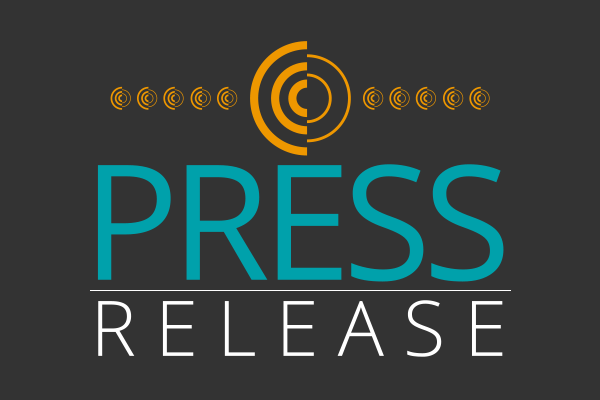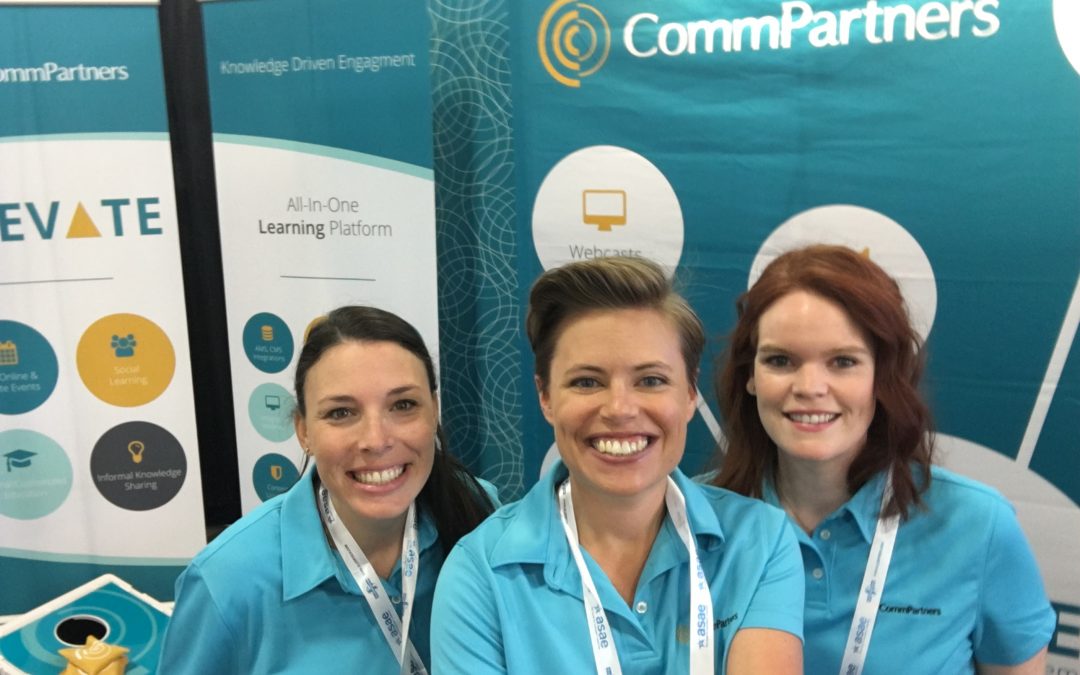
by Aubrey Mellos | Sep 20, 2017 | Blog
By Mary Byers, CAE, CSP
According to Forbes contributor Mike Maddock, “In order to make a product or service everything it can be, it needs to be repeatedly soft launched with both internal stakeholders and external customers. This means literally sending the idea—be it a product or a service—into a limited part of the marketplace with the full understanding that it will be modified (perhaps extensively) based on how customers and consumers react.”
But this isn’t how most associations approach innovation. Most I’ve worked with see innovation as a beginning and an end rather than an iterative process. A beginning and an end is more comfortable because we start and finish. We’re able to cross something off the list—and then we move on. It’s less comfortable to be “in process” with a fluctuating launch date (especially when reporting to a board of directors) and uncertainty about what the final product or service will look like.
Maddock’s iterative approach can be summed up in one word: experimentation. And it’s a strategy I’m suggesting for associations, albeit an uncomfortable one.
Certainty is much easier to sell, both internally and externally. But innovation can be anything but certain. Often, it’s a messy, chaotic process. And who likes that?
Though we may not like it, achievers and innovators have found a way to live with the messiness of experimenting. Even more so, they’ve adopted a willingness to experiment as a strategy for moving their associations forward. There’s a lot to be experimenting with these days in the association arena:
- Hybrid dues models
- Product pricing and packaging
- Online & e-learning
- Face-to-face meeting innovations
- Video vs. printed communications
- Governance
Experimenting in the above areas is difficult because there’s so much at stake. But there’s even more at stake for associations that don’t experiment. Declining revenue, decreasing meeting attendance, and falling membership numbers are just the beginning. There’s also loss of influence and long-term sustainability to consider.
There are three things that making experimenting easier for associations:
- Do it regularly. A culture of continuous experimentation not only helps determine where you can gain momentum, it becomes an expectation. And when it is an expectation, it’s easier to get your board and staff to support you.
- Utilize soft launches. There’s a lot at stake with a big, splashy roll-out. Start with small, quiet experiments. The bigger the project, the more important this is.
- Make recalibration a habit. Moddock writes, “We’re only right when the market tells us so….The market will help us see and hear what we can do to be more right (and also help us eliminate all the things our customers—and potential customers—don’t like or don’t want).”
The willingness to experiment is both a habit and a mindset. It’s also a valuable strategy for associations in today’s rapidly changing landscape.
Mary Byers, CAE, CSP, shares additional strategy starters for busy association professionals in her new online learning series titled, Momentum: Strategy Starters for Today’s Association Professional at leadwiselearning.com. She is also the author of Race for Relevance: 5 Radical Changes for Associations.

by Aubrey Mellos | Sep 6, 2017 | Blog
By Mary Byers, CAE, CSP
I’m intrigued by the associations who are doing big things. It may be something internally to secure the health of the organization itself, something on behalf of members, or something for the greater good of the world. If you’re interested in making a leap on behalf of your organization, here’s how to do it:
Identify the leap. Mark Tomlinson, a retired association CEO, helped engineer four inter-related leaps on behalf of his former organization. Naming the leaps was the first step. Mark’s leaps were: redefining the community the association served, additional revenue, enhance product/service delivery mechanism and divestiture of capital assets. If you name it, you’re more likely to claim it.
Engage in a 90-day sprint. In short, a sprint requires you to set aside work so that you can focus on the most important work. I’ve written in depth about how to do this here. In all my years as a consultant, this is one of the most powerful concepts I’ve come across.
Aim for excellence. Jim Collins, author of Good to Great: Why Some Companies Make the Leap and Others Don’t, says, “Good is the enemy of great. And that is one of the key reasons why we have so little that becomes great.” Set your sights high and don’t settle. Members are attracted to excellence.
Recalibrate as necessary. The quest for excellence often is mistaken as the quest for perfection. Our desire to do things “right” often keeps us from trying and discourages continuous enhancement. Starting with the expectation that you WILL recalibrate makes it acceptable to do so (versus seeing recalibration as an admission of failure). I love this quote from author Robert Barult: “…taking a step backward after taking a step forward is not a disaster, it’s more like a cha-cha.” Come to the party ready to dance and you’ll succeed.
Declare your association an inertia-free zone from now on. It’s harder to leap when you have to gather the energy to do so. If your culture is one that supports, encourages and celebrates leaping (vs. protecting the status quo), you’ll see more people and teams getting the running start they need to leap. I like what Wharton Business School professor Rita Gunther McGrath says, “…allowing an existing structure to remain in place for too long creates inertia and results in and organization that is maladapted to the opportunities it finds.” Inertia is an innovation-killer so do whatever you can to discourage it.
Try a triple jump. Once you’ve got the momentum necessary to leap, keep going. Movement in one area often makes it easier to create movement in another. When one leap is complete, ask, “Where can we get leverage and momentum on behalf of the organization now?” Attempting a triple jump is a natural inertia-buster and increases the overall return on investment for your association.
Mary Byers, CAE, CSP, shares additional strategy starters for busy association professionals in her new online learning series titled, Momentum: Strategy Starters for Today’s Association Professional at leadwiselearning.com. She is also the author of Race for Relevance: 5 Radical Changes for Associations.

by Aubrey Mellos | Aug 28, 2017 | News
Columbia, MD – August 28, 2017. CommPartners, a leading provider of Learning Management Software, webcast, and livestream solutions and Mary Byers, CAE, author of the Race for Relevance Series announce the release of LeadWise (www.leadwiselearning.com), an online leadership community built to inspire and educate association professionals.
LeadWise, developed by CommPartners through its Elevate LMS, offers valuable industry resources including a new e- learning course, “Momentum: Strategy Starters for Today’s Association Professional.”
The course features video interviews, resources, case studies, and quizzes. Presented in bite-sized segments, Momentum takes a deep dive into cutting edge ideas and strategies association executives can employ immediately within their organizations. Key sections include:
- Questionology™: Harnessing Advanced Inquiry to Drive Strategy
- Experiment: Permission to Win When Nothing is Certain
- Leap: Strategies to Accelerate Progress and Make Big Gains
Mary has spent years working with associations and understands the importance of innovation and the strategies required to ensure relevance. Momentum gives participants direct access to these findings.
“It takes a true commitment from association leaders to create a culture of innovation in order to drive momentum, and I just don’t see it all that often. I’m excited to provide a course that offers adaptable and easy to implement strategy starters for association professionals to create momentum towards true organizational advancement. ” Mary Byers, CAE
Teaming with Mary, CommPartners developed LeadWise to provide association executives a resource to turn to help inspire ideas and think through solutions to their greatest challenges.
“We are thrilled to partner with Mary, a true industry thought leader, to launch a learning platform that gives association professionals a place to collaborate and learn. It’s exciting to bring Mary’s knowledge and experiences online where it is available for any time, on-demand access.” Richard Finstein, CEO, CommPartners
To learn more about the LeadWise community, resource offerings, and Momentum e-learning course please visit www.leadwiselearning.com.
About Mary Byers
Through highly interactive programs and carefully choreographed retreats, Mary uses compelling questions and thought-provoking techniques to encourage participation. Mary helps associations remain relevant in an increasingly competitive environment. The author of Race for Relevance: 5 Radical Changes for Associations and Road to Relevance: 5 Strategies for Competitive Associations, she’s worked with a wide variety of associations (both individual membership and trade groups) and helps volunteer leaders and staff alike create a viable and sustainable future.
About CommPartners
CommPartners is a leading provider of online education and event solutions. We help organizations conceive, capture, organize, and monetize content. Our solutions begin with Elevate LMS, our award-winning LMS platform, and extends to a wide range of online education services including curriculum design, webinars, webcasts, livestream programs and virtual conferences. To learn more visit: www.commpartners.com

by Aubrey Mellos | Aug 22, 2017 | Blog
By Mary Byers, CAE, CSP
Meetings. Deadlines. The day-to-day work of running your organization. All of these get in the way of doing new work on behalf of your association. But new work is often necessary to create leverage and momentum—especially when you’re stuck in a business-as-usual environment. A 90-day sprint may be just what you need to get ahead. This time period is long enough to accomplish something big, but short enough to create a sense of urgency (one of the advantages of the sprint concept). Here’s how to use a 90-day sprint:
Clearly identify the purpose of your sprint. Are you setting aside time to develop a plan or implement one? Will you do a deep dive into a challenge such as declining revenue or meeting participation? Do you want to complete 90 days of research, either about your members or how other associations have done what you want to do? The more clearly you define your work, the more likely you will complete it.
The National Association of Healthcare Quality wanted to demonstrate that it was keeping up with evolving trends in healthcare quality by articulating evolving competencies for advanced and master practitioners. According to NAHQ CEO, Stephanie Mercado, CAE, “The quality space is crowded and being first to market is key, so our goal was to bring a quality product to market fast.”
Assemble your team. Though 90-day sprints can be done solo, the larger the project, the more likely you’ll need others’ help. If your project requires more than just you working on it, get buy-in from the people and departments you need before you begin so that you don’t lose time after the clock starts ticking.
Assign work. Identify who is going to do what. Be clear about the end goal so that your team is doing work that supports your goal. Productivity expert Peter Drucker says, “There is nothing so useless as doing with great efficiency that which should not be done at all.” I agree.
Create a feedback loop. Use an online productivity tool such as Basecamp, Asana or Teamwork Projects to share information and track progress all in one place. Use preset meetings to troubleshoot, review work and determine next steps.
Set aside any non-necessary work and put your head down. It’s hard to ignore incoming e-mails and calls (but easier to do if you turn off e-mail notifications and silence your phone) but a powerful way to boost productivity. (My personal e-mail notification has been turned off since 2011, though I check it several times a day.) Work in blocks to allow you to concentrate and avoid the time loss of task switching. Start your day with work related to your sprint and only check your e-mail once or twice a day during your sprint. This is counter to how America works but essential to making gains and achieving big things.
Take stock. Where are you at the end of 90 days? Is there still work to be done? What’s next? All of these are valuable questions when you reach the end of your sprint. The answers will help determine your next steps.
NAHQ launched one competency area every 90 days, for 6 cycles. When the association reached the last topic, it republished the previous 5 competencies and the final competency into one book called HQ Essentials. According to Mercado, “We sent the book to all members for free as part of a larger strategy to improve our value proposition. Members immediately put it to work, developing models for staff structure, competency based job descriptions, etc. The result for NAHQ was demonstrated relevance for our members and the ability for NAHQ to use the HQ Essentials as a product development framework for the future.”
Celebrate. Be sure to take time to celebrate when your sprint is over. Doing so will make it more likely that you’ll be willing to do another…after you take a needed break, of course!
Mary Byers, CAE, CSP, shares additional strategy starters for busy association professionals in her new online learning series titled, Momentum: Strategy Starters for Today’s Association Professional at leadwiselearning.com. She is also the author of Race for Relevance: 5 Radical Changes for Associations.

by Aubrey Mellos | Jul 25, 2017 | News
CommPartners is excited to once again be exhibiting at the 2017 ASAE Annual Meeting & Exposition from August 12-15, 2017 in Toronto, Ontario, Canada.
This event is the highlight of our year as we are able to connect with thousands of associations, clients, and friends. CommPartners will be showcasing all of the new features of Elevate LMS, as well as our services related to Webinars & Webcasts, Livestream Events, Virtual Conferences, and Content Recordings.
We hope you are able to connect with us…here’s a few options:
Visit Our Booth #425
Stop by our booth to learn more about how Elevate Learning Management System can help your association create meaningful learning experiences for your members. If that wasn’t enticing enough, we will also have games, prizes, and chocolate!
Schedule an Appointment
We will be on-site for one-on-one meetings to further explore our services, simply catch-up, or to view a demo. You can arrange a meeting by visiting the Attendee Service Center or contact us directly.
Celebrate With Us at the Hockey Hall of Fame
 Are you ready to team up for drinks and hors d’oeuvres? We are co-hosting an exclusive party with Higher Logic and other leading industry partners on Sunday, August 13th, from 7-9pm, at the Hockey Hall of Fame. This event also gives you access to several exhibits, theatres, an interactive rink, and a replica of the Montreal Canadiens’ dressing room. Your colleagues are welcome, so bring them with you!
Are you ready to team up for drinks and hors d’oeuvres? We are co-hosting an exclusive party with Higher Logic and other leading industry partners on Sunday, August 13th, from 7-9pm, at the Hockey Hall of Fame. This event also gives you access to several exhibits, theatres, an interactive rink, and a replica of the Montreal Canadiens’ dressing room. Your colleagues are welcome, so bring them with you!
Reserve your spot now!
We look forward to connecting with you in Toronto!






 Are you ready to team up for drinks and hors d’oeuvres? We are co-hosting an exclusive party with Higher Logic and other leading industry partners on Sunday, August 13th, from 7-9pm, at the Hockey Hall of Fame. This event also gives you access to several exhibits, theatres, an interactive rink, and a replica of the Montreal Canadiens’ dressing room. Your colleagues are welcome, so bring them with you!
Are you ready to team up for drinks and hors d’oeuvres? We are co-hosting an exclusive party with Higher Logic and other leading industry partners on Sunday, August 13th, from 7-9pm, at the Hockey Hall of Fame. This event also gives you access to several exhibits, theatres, an interactive rink, and a replica of the Montreal Canadiens’ dressing room. Your colleagues are welcome, so bring them with you!